The Munai Mines 慕乃厂 in Lancang District 澜沧县
The first borderland mine that appeared in the Qing tax registers. The local lord reportedly offered a small tribute tax, half of which was accepted by the Yongzheng emperor. Lead recycling from slags became a local industry with outputs of several hundred to several thousand tons from the late 19th century to the 1940s.
Fieldwork by Yang Yuda and Nanny Kim, 2011.4.20., supported by the Cangyuan Lead Mining Company
2011.4.19. Cangyuan 沧源 to Lancang 澜沧
Lancang is a small town, similar in size to Cangyuan on a small plateau, about 30,000 to 40,000 inhabitants. The Cangyuan Lead Mining Company is located outside the town. The deputy director, Mr. Lin Zeyin 林泽银 received us and organized the visit at the mines.
2011.4.20. Lancang 澜沧, Laochang 老厂 near Zhutang 竹塘 (Munai Mines 慕乃厂)
Director Lin had contacted Mr. Luo Huizeng 罗辉增 (78 years old), a retired engineer who had worked at the mines for many decades. Engineer Luo was most pleased to talk about the past. He first came to the area in late 1954, shortly after devastating epidemics. They walked in from Pu’er. During his time at Munai, he had been in a great many old galleries but had not paid much attention to remains of smelters or traditional smelting techniques. He remembered an experiment by a young graduate (?) at smelting lead and silver in a trough-shaped furnace that in fact produced a little lump of silver. The details of this experiment had escaped Luo. He was positive that slags had been recycled for lead well before his time, and that the minor slag heaps near settlements around old mines were results of secondary exploitation, as there were no mines beyond the three central hills. He was also positive that the Munai New Mines were a minor site compared to the Old Mines.
Company engineers took us to the mines. The site is beyond Zhuyuan, at about 1800 m, in between karst cones that stand no higher than 1900 m. The day was foggy with a few showers, so that the group of karst cones was never fully in sight.
According to Mr. Luo, the old mines all between three karst cones called Shizi shan 狮子山 (Lion Mountain), Shuishi shan 睡狮山 (Sleeping Lion Mountain) and Lianhua shan 莲花山 (Lotus Mountain). The entire area and its surroundings have been dug up repeatedly, especially the area around the feet of the hills and between, but also extending into the surroundings and with even the cones partly altered in shape. The state company had given leases to various private company that exploit remaining slags and discarded ores. The underground mines now exploit a slate layer in the primary zone for lead. The main business activity is the lead smelting facility, while the crushing plants apparently are working at a loss.
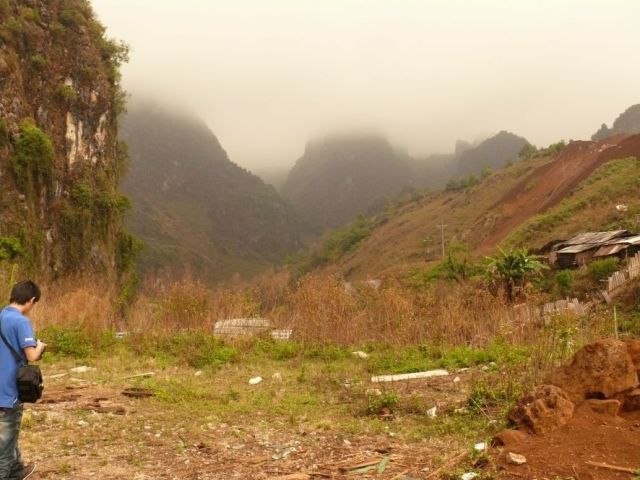
The dell between Shizi shan and Shuishi shan, where numerous mine entrances used to be visible.
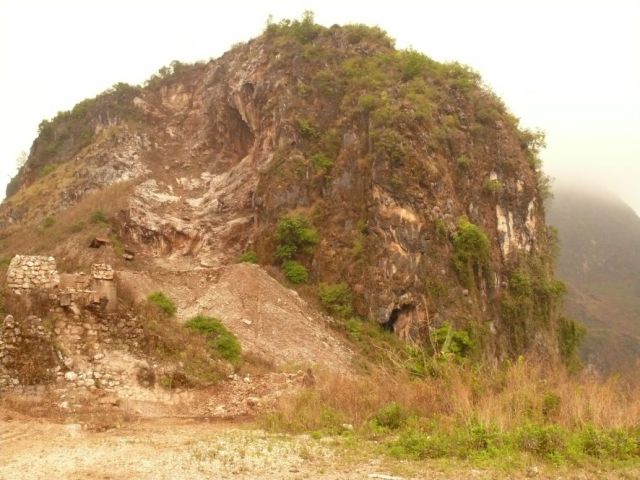
Shizi Mountain seen from the mine headquarters
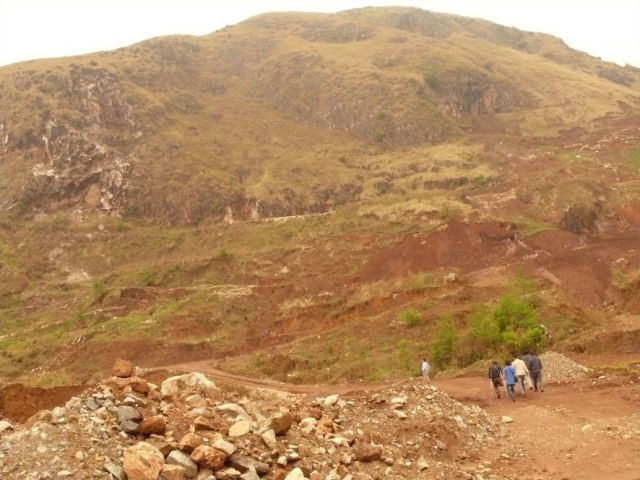
Lianghua Mountain
According to engineers at the min, ore recycling had been undertaken in three stages here: First, since the Republican period and partly involving a British company was the resmelting of slags of the major slage heaps, which filled the lower slopes and a dell under the Shizi and Shuishi Mountains. In the second step locals dug up the soil containing slags and washed them out with bamboo sieves. Finally, small bits of slags were again washed out and collected for resmelting.
The far end of the recently worked area from the mine headquarters at Shizi Mountain is a large basin, which used to be filled with waste ores that have now been almost completely removed (in the dell below Lianhua shan: 535-543).
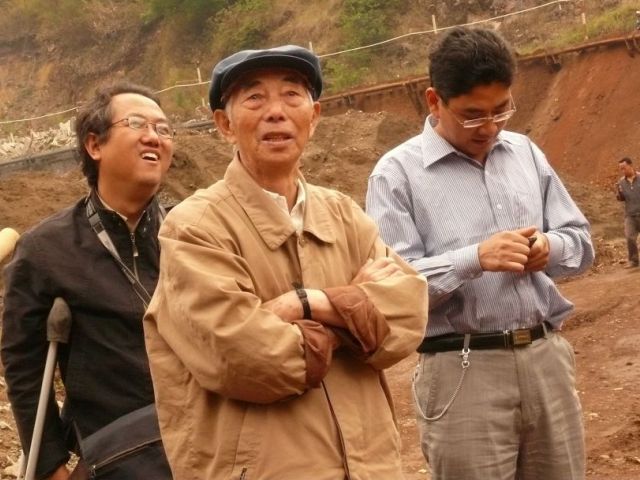
Yang Yuda, Luo Huizen and chief engineer Zhou at the far end of the mining area
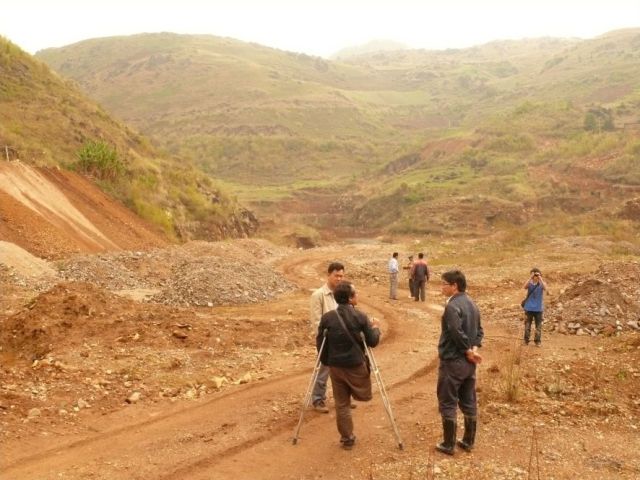
The far end of the mining area, where the recent removal of old gangue has left a large basin
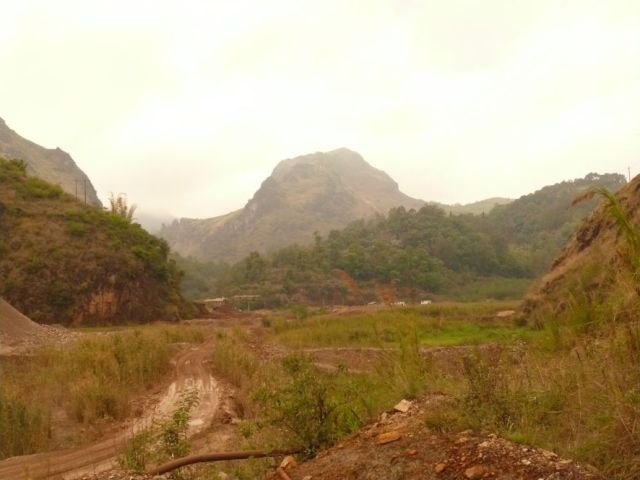
View from the basin to Shizi Mountain
Mr. Luo knew of two temple locations, a Dongyue miao 东岳庙 on Shuishi Mountains, and a Xiyumiao 西岳庙 in the dell below. The structures that he had himself seen were small buildings with lead plate roofs. We had passed by the site of the Xiyue miao, where nothing remains between new buildings and dug-up ground below former levels. On the Shuishi Mountain, we found the site of the Dongyue Temple, but only a single wall that might have been part of the building.
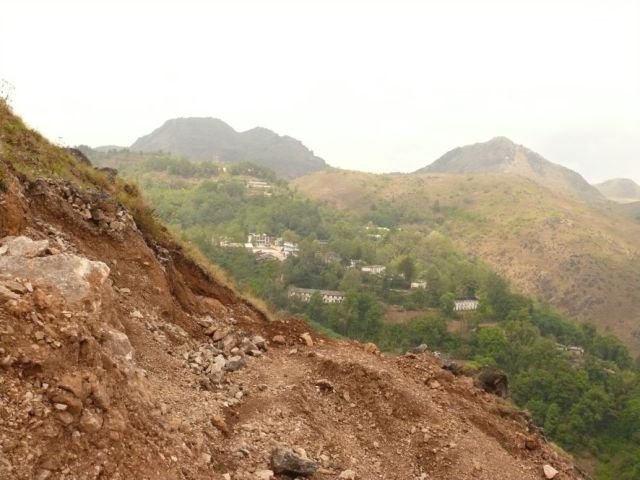
Site of the Dongyue temple about 2 thirds up Shuishi Mountain
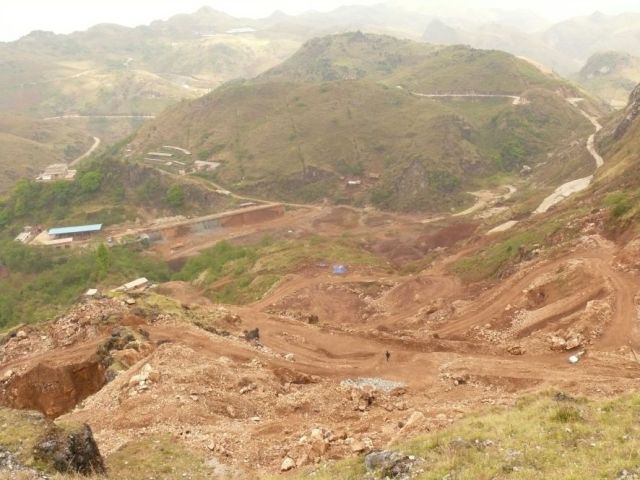
View from Shuishi Mountain to Liangha Mountain
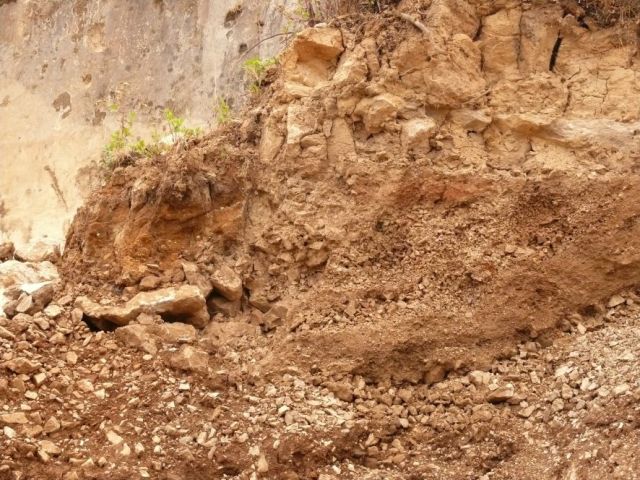
Layers of historic gangue debris under soil on Shuihu Mountain
Engineer Zhou tried to show still existing mine entrances, but the slope got too steep and unstable. A reachable site at the foot of a small limestone cliff in fact had several mine entrances that looked much like the ones we had seen at Maolong. Two of these entered natural fissures and descended steeply.
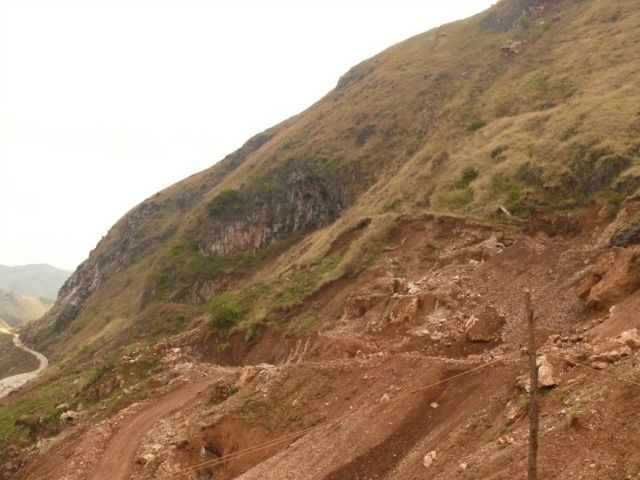
Small limestone cliff in the lower part of Shuishi Mountain, with several lesser mine entrances.
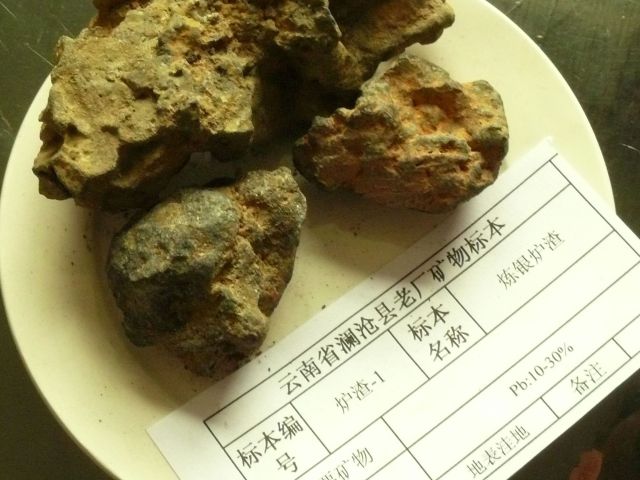
A specimen of galena ore and three slag specimens held at the mine headquarters; and quartz crystals on rock that we frequent saw in freshly broken up rock on Shuihsi and Lianhua Mountain.(2)
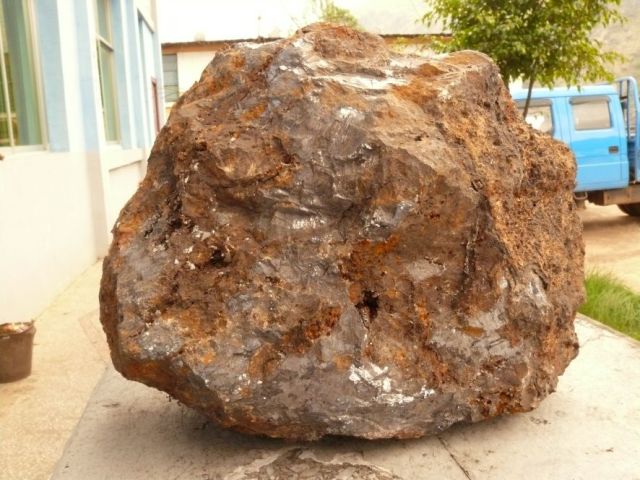
A specimen of galena ore and three slag specimens held at the mine headquarters; and quartz crystals on rock that we frequent saw in freshly broken up rock on Shuihsi and Lianhua Mountain.(1)
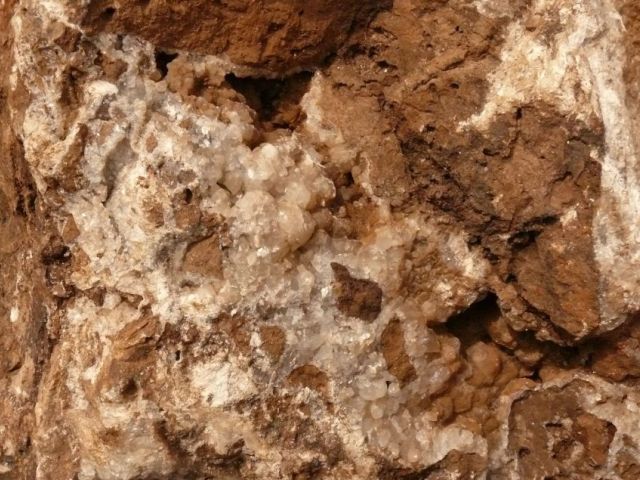
A specimen of galena ore and three slag specimens held at the mine headquarters; and quartz crystals on rock that we frequent saw in freshly broken up rock on Shuihsi and Lianhua Mountain.(3)
Results: As the Lema Mines, the Munai Mines were highly concentrated. In agreement with observations by Searls of 1921, it appears probable that exploitations started with placer deposits that were found a fair way up on the karst cones. This is suggested by the fact that slags and gangue were exploited a considerable way up the hills, especially up Shuishi Mountain. The main mines would have exploited fissures in the cementation zone or zones, at various levels in the lower limestone , probably reaching relatively low levels during the historic mining period.

